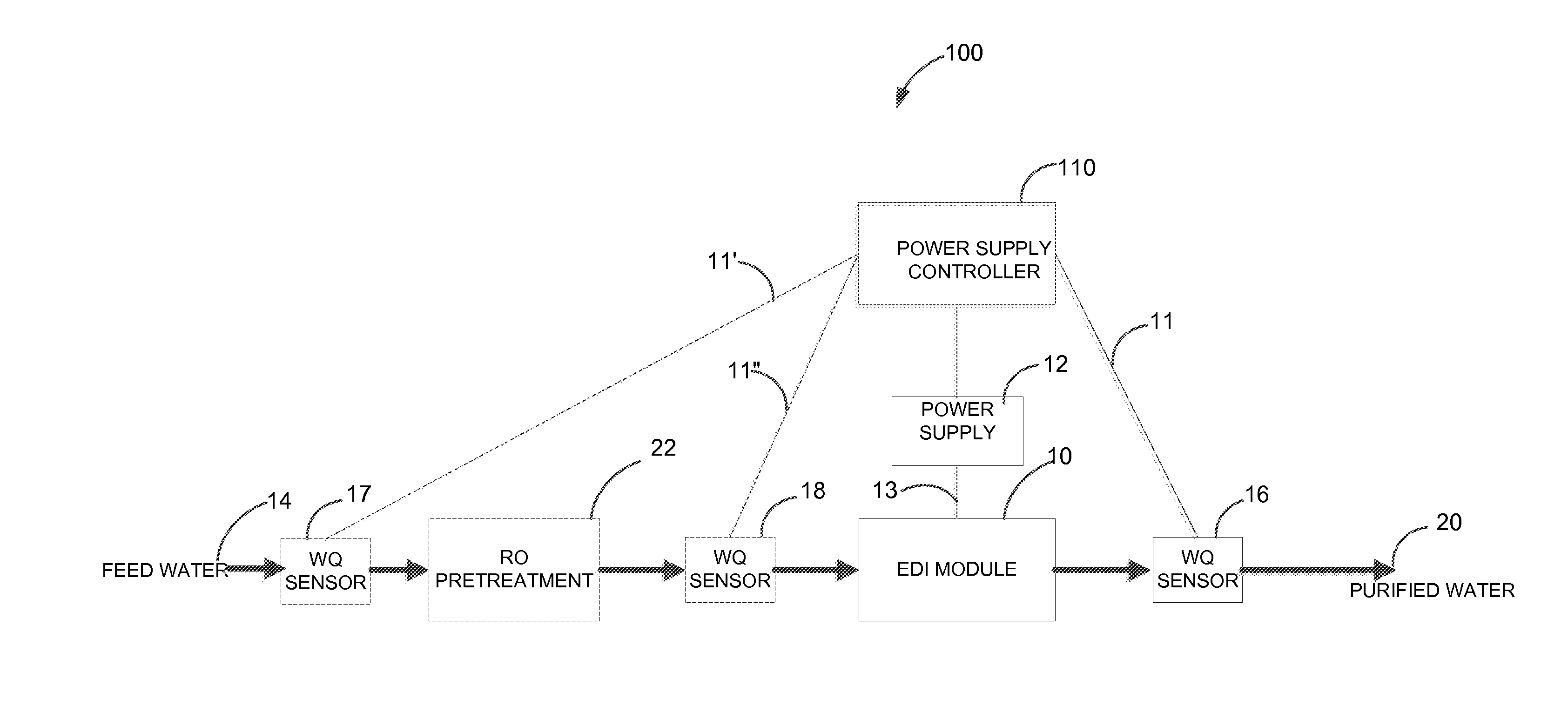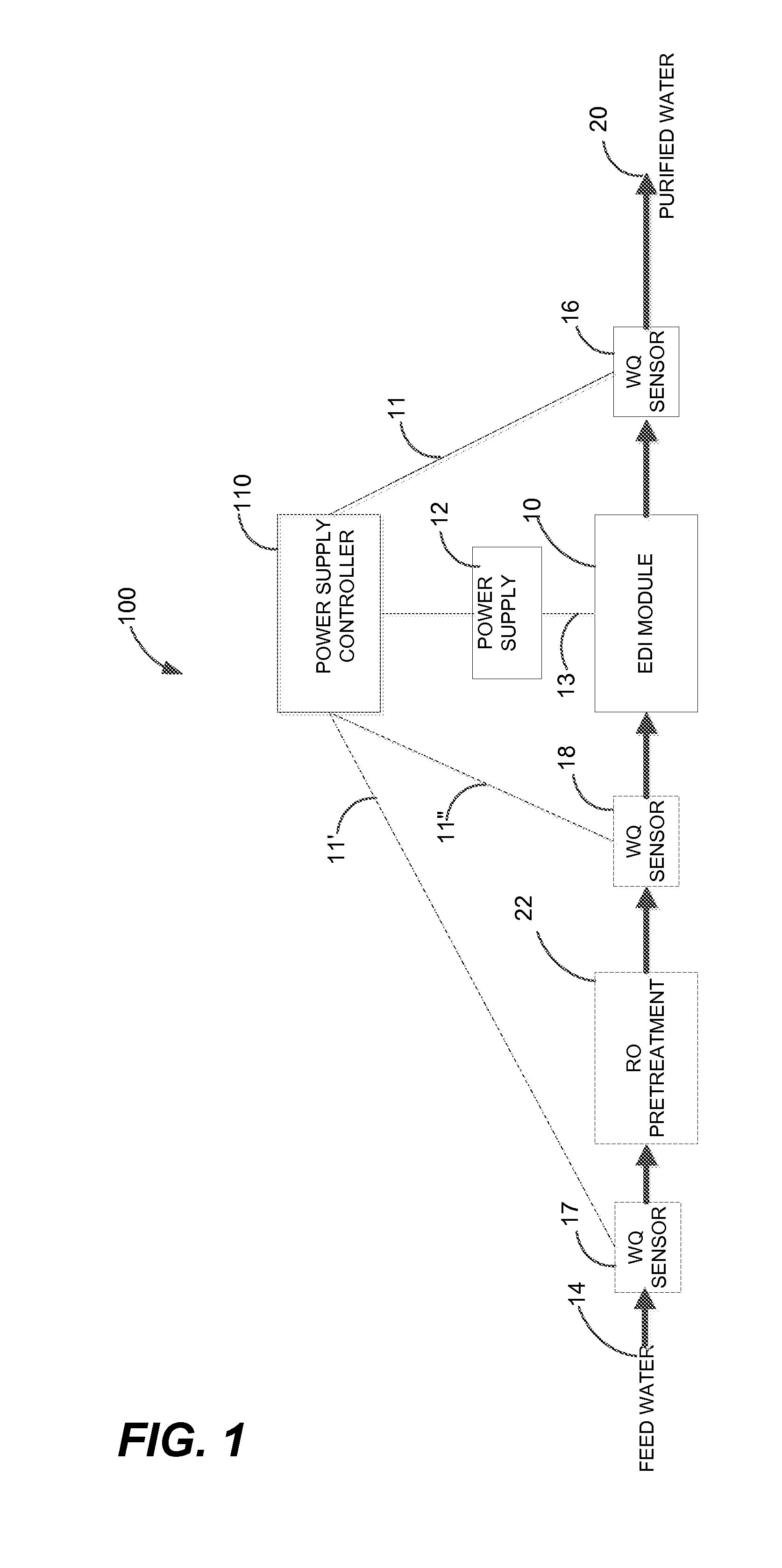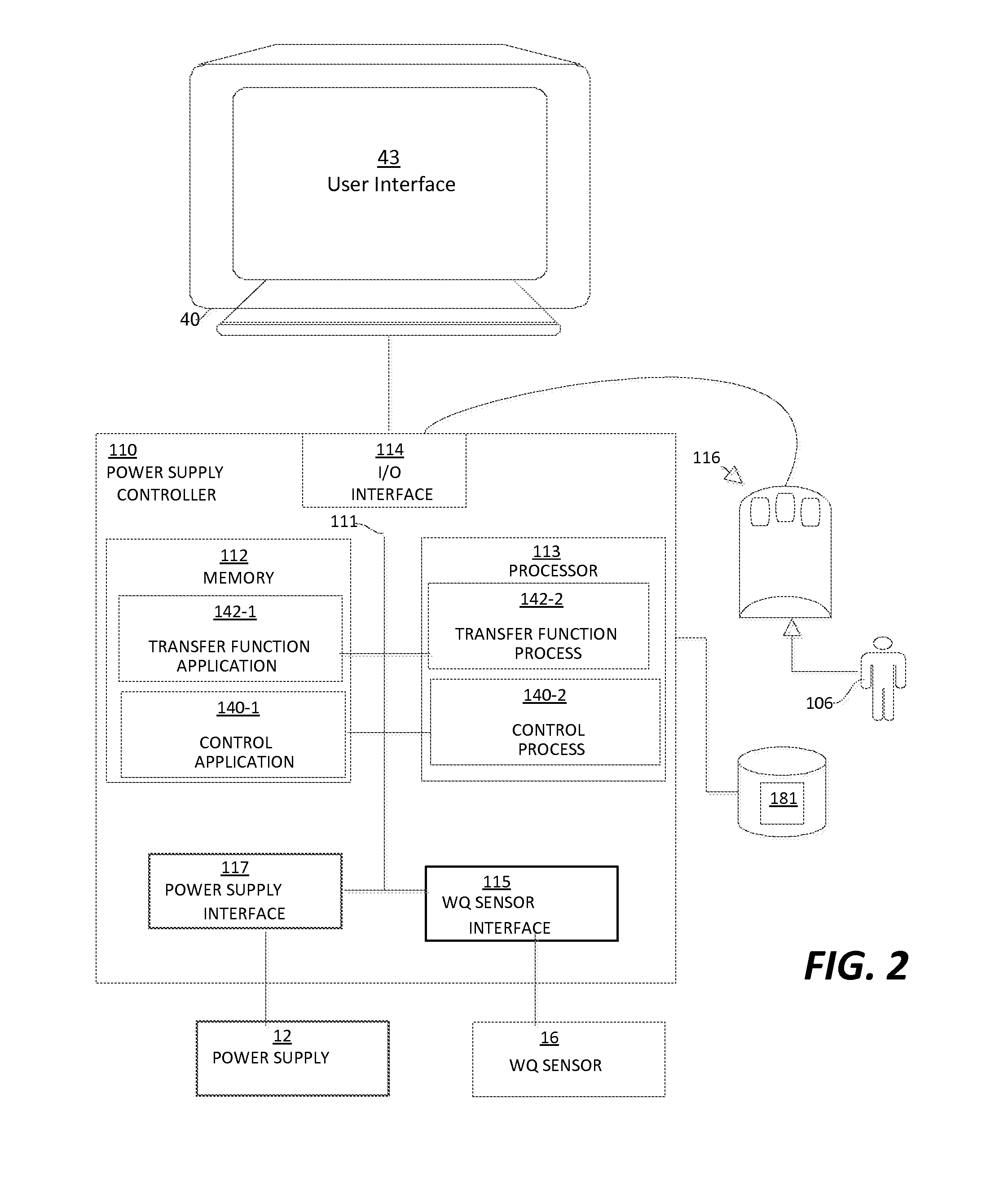Electro-deionization control system
- Summary
- Abstract
- Description
- Claims
- Application Information
AI Technical Summary
Benefits of technology
Problems solved by technology
Method used
Image
Examples
Embodiment Construction
[0035]The water quality (“WQ”) of high purity water is commonly measured by its resistivity, a property of the water and typically measured in units of MΩ·cm. Embodiments of the presently described method and apparatus for operating an electro-deionization (EDI) module produce purified water with a system including a power supply controller, a WQ sensor and a controllable power supply to provide more efficient and reliable operation.
[0036]As used herein, the term “quality”, “water quality” and its abbreviation “WQ” will be used interchangeably to signify the resistivity of the high purity water produced by the EDI module, typically measured in units of mega-ohms-centimeters (MΩ·cm). The higher the resistivity of the water is, the lower the concentration of ionic contaminants and the higher the water quality will be. The maximum achievable WQ of water is 18.2 MΩ·cm owing to the ionization of water into the ionic species H+ and OH31 according to the chemical reaction
H2O→H++OH−KW=[H+]...
PUM
| Property | Measurement | Unit |
|---|---|---|
| Electrical resistivity | aaaaa | aaaaa |
| Electrical resistivity | aaaaa | aaaaa |
| Power | aaaaa | aaaaa |
Abstract
Description
Claims
Application Information
 Login to View More
Login to View More - R&D
- Intellectual Property
- Life Sciences
- Materials
- Tech Scout
- Unparalleled Data Quality
- Higher Quality Content
- 60% Fewer Hallucinations
Browse by: Latest US Patents, China's latest patents, Technical Efficacy Thesaurus, Application Domain, Technology Topic, Popular Technical Reports.
© 2025 PatSnap. All rights reserved.Legal|Privacy policy|Modern Slavery Act Transparency Statement|Sitemap|About US| Contact US: help@patsnap.com



